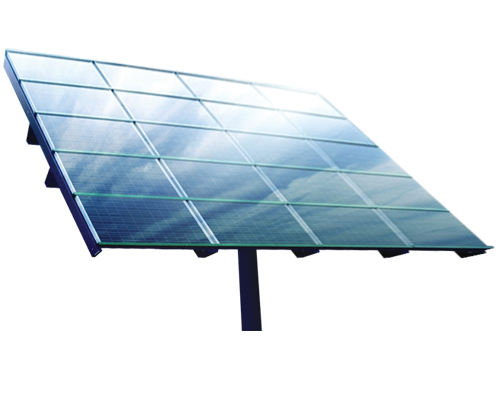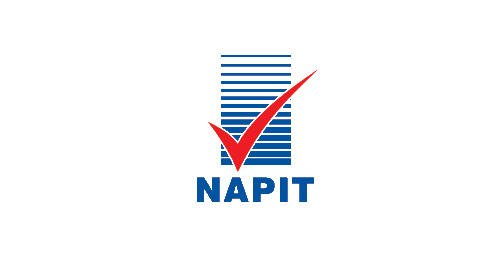How it works
Solar panel electricity systems, also known as solar photovoltaics (PV), capture the sun’s energy using photovoltaic cells. These cells don’t need direct sunlight to work – they can still generate some electricity on a cloudy day. The cells convert the sunlight into electricity, which can be used to run household appliances and lighting.
Power is generated in DC (same as battery power) and converted to AC which can be used around your home or building, the inverter does the conversion.
The panels are connected in strings which link a series of panels together, these are then fed back to the central inverter which converts the current to AC. The AC supply is connected to your consumer unit or fuse board, any demand on the board from appliances and lighting will automatically be fed from the PV system, if your demand is greater than the supply from the panels the mains supply will make up the difference. If you are generating more than you are using the surplus electricity is fed back into the grid. All this happens completely automatically.

What factors affect my return on investment?

There are many factors that affect the cost of the installation and the amount of power it will generate. Roof type will affect the cost/kWp with metal roof being the cheapest and flat roofs or ground mounted systems being the most expensive. Domestic tiled roof tend to be somewhere in the middle when mounted on top of the roof covering. Inset systems on tiled and slate roofs can be very cost effective and aesthetically pleasing on new build properties they can reduce the amount of roofing materials required.
Location, pitch and orientation of the roof have the biggest effect on how much energy is produced, south facing roof with around 35-40°pitch will be the most efficient producing around 937kW of energy for every kWp of panels installed, meaning a 4kW system will produce an estimated 3,748kW of energy/year in the Midlands.
Making maximum use of the energy you’re system produces will give you a faster payback, turning on appliances in the middle of the day will help, fitting an immersion optimiser is the most cost effective means of utilising your energy, battery storage systems can store your excess energy for you to use when the sun goes down
Our industry approvals





